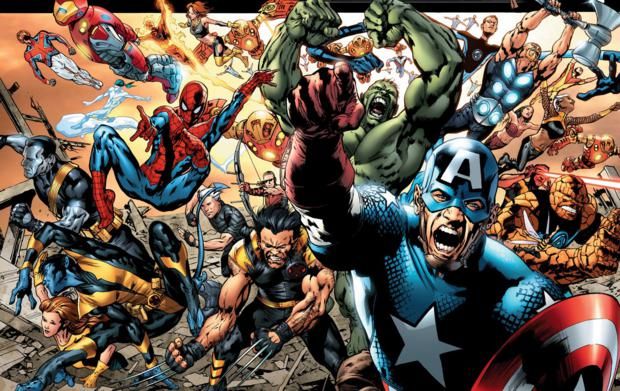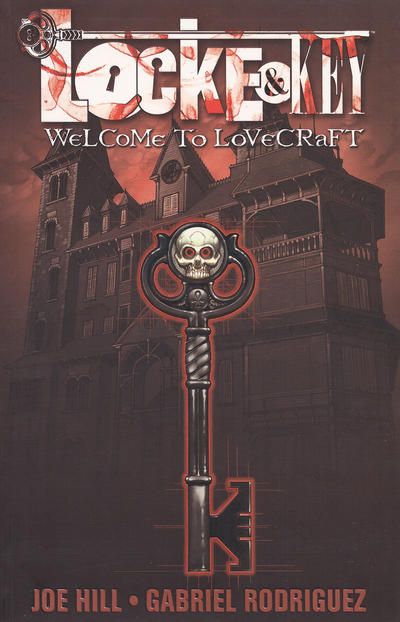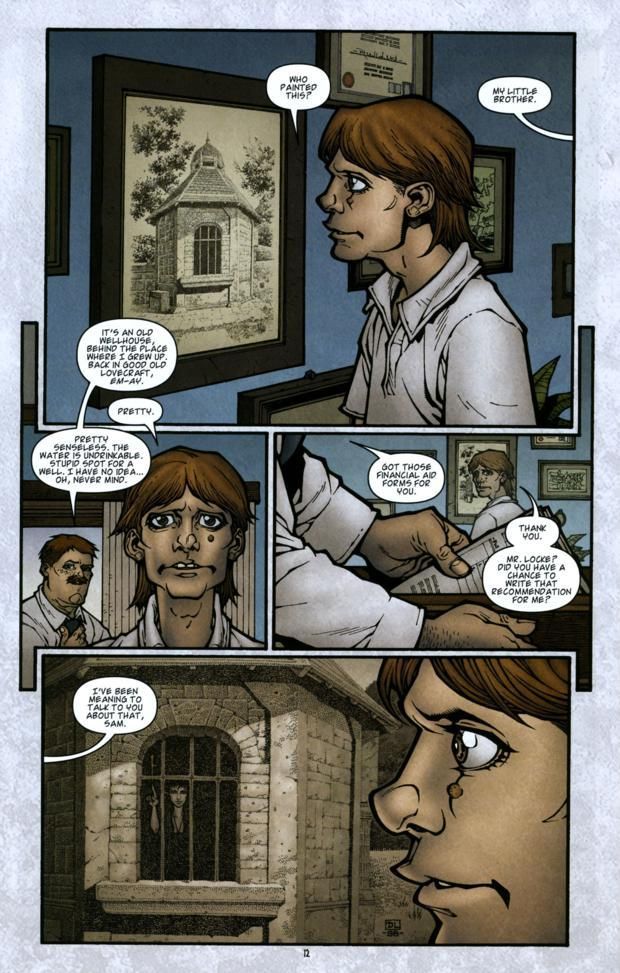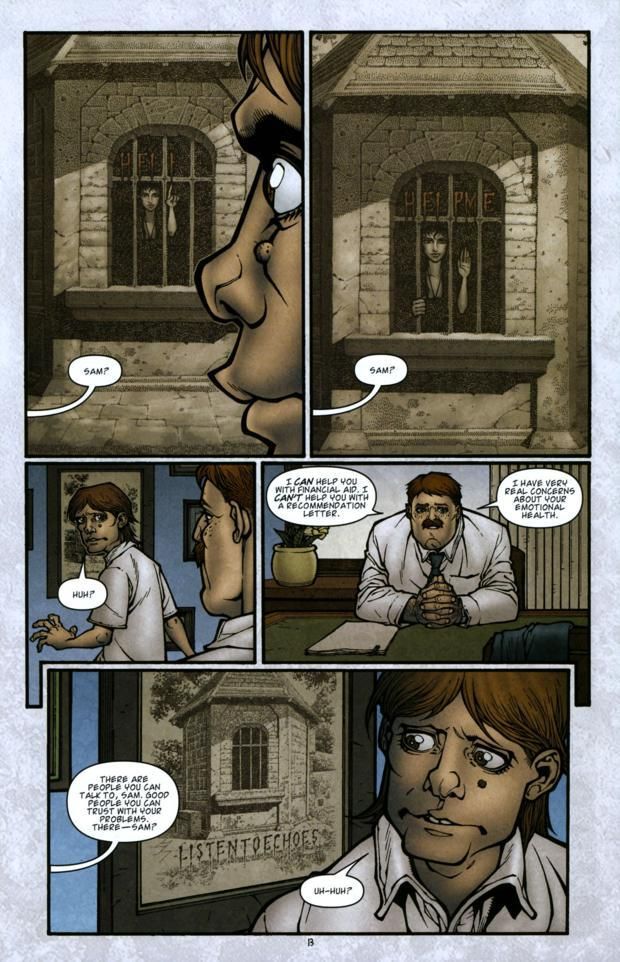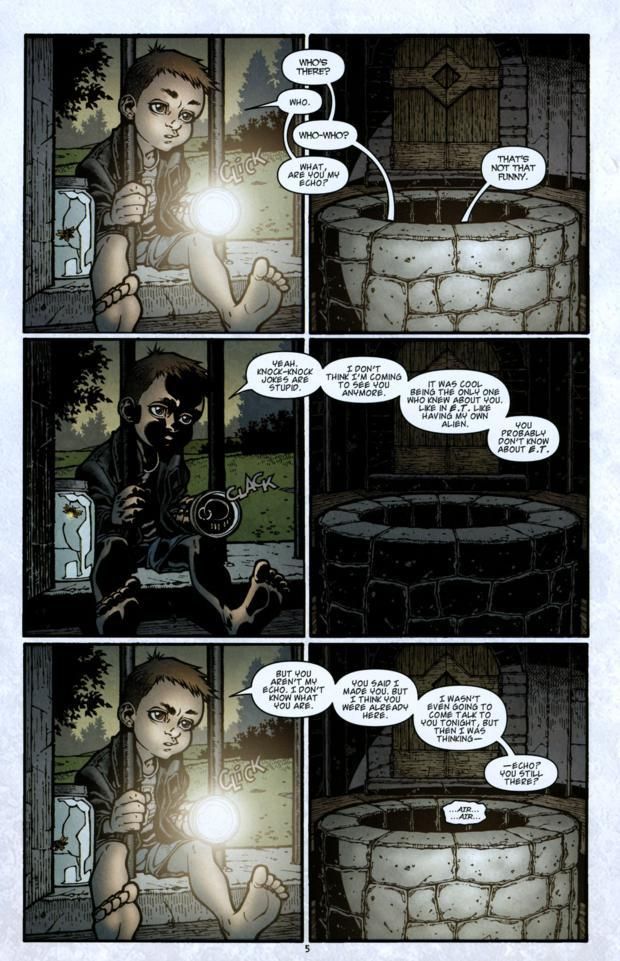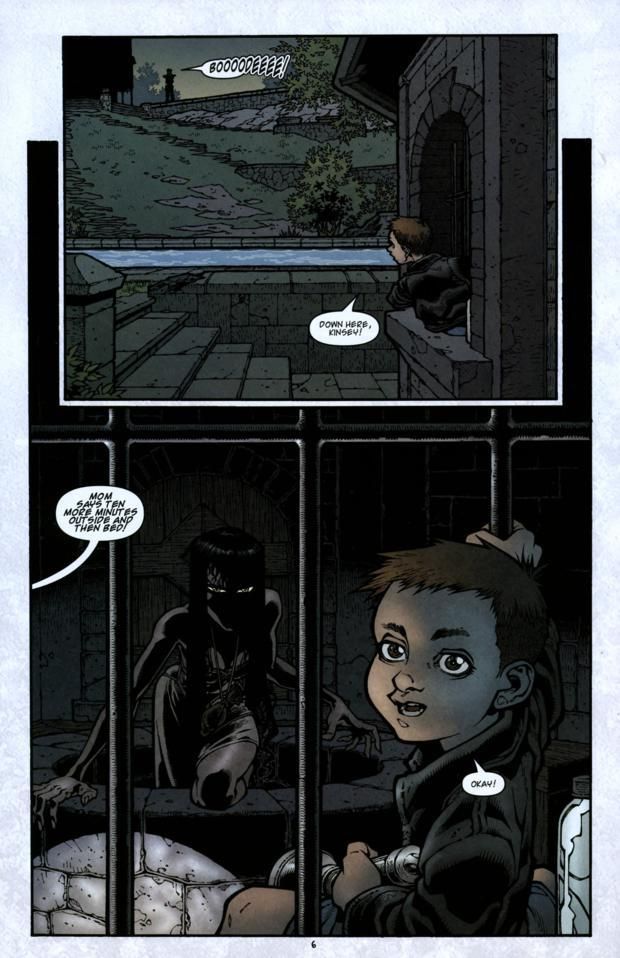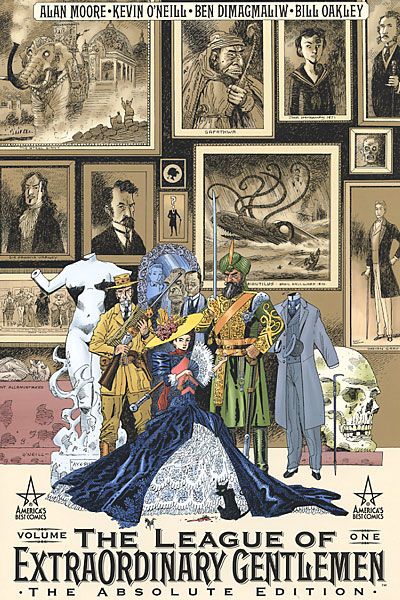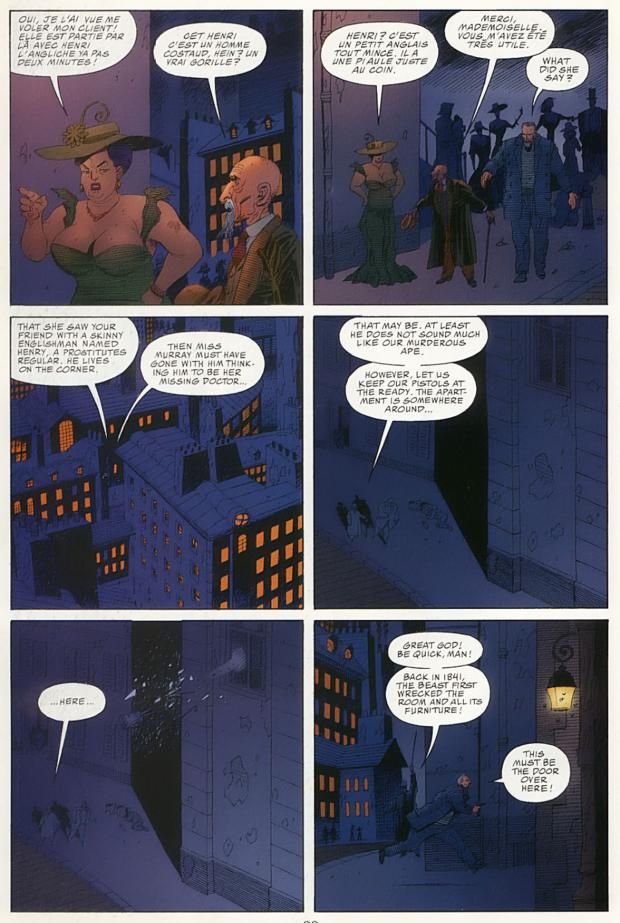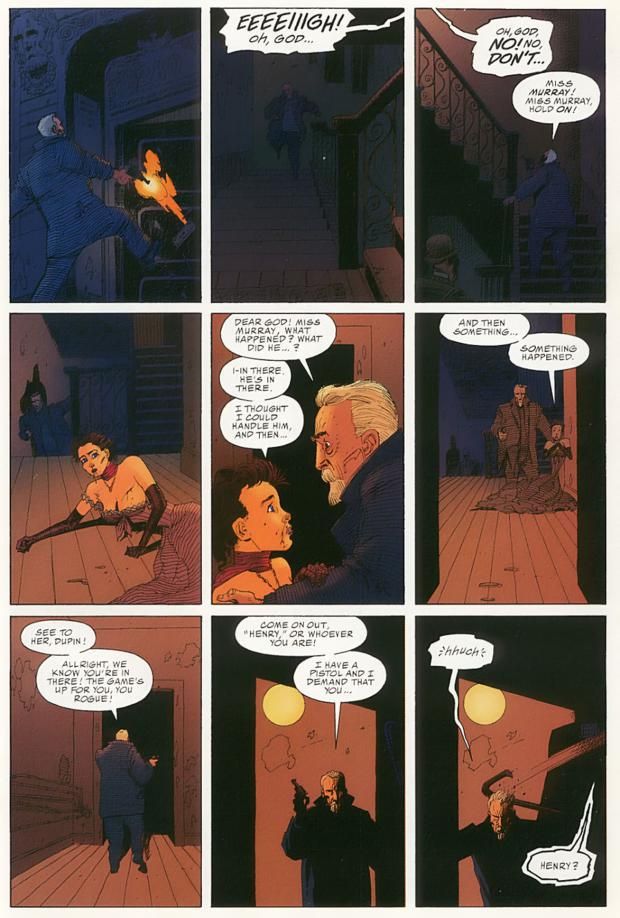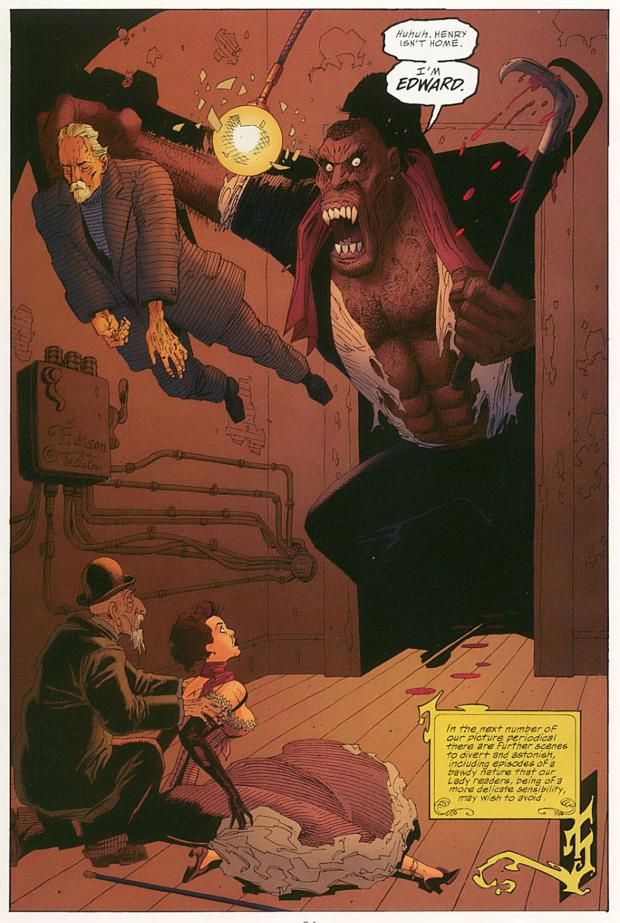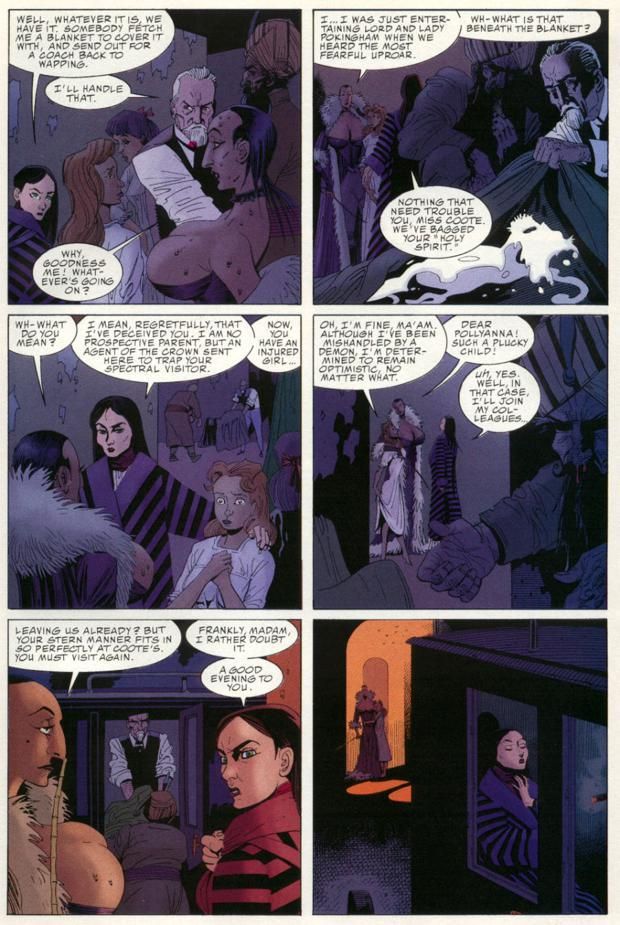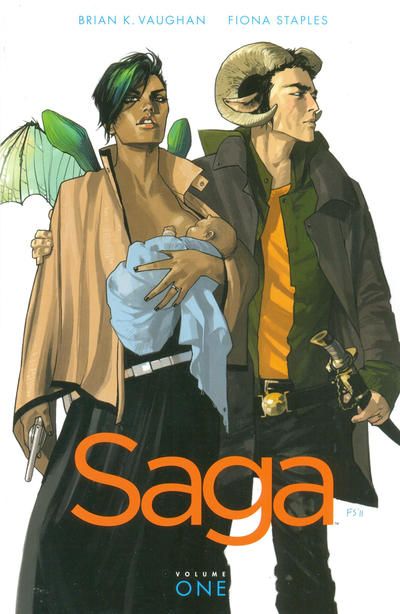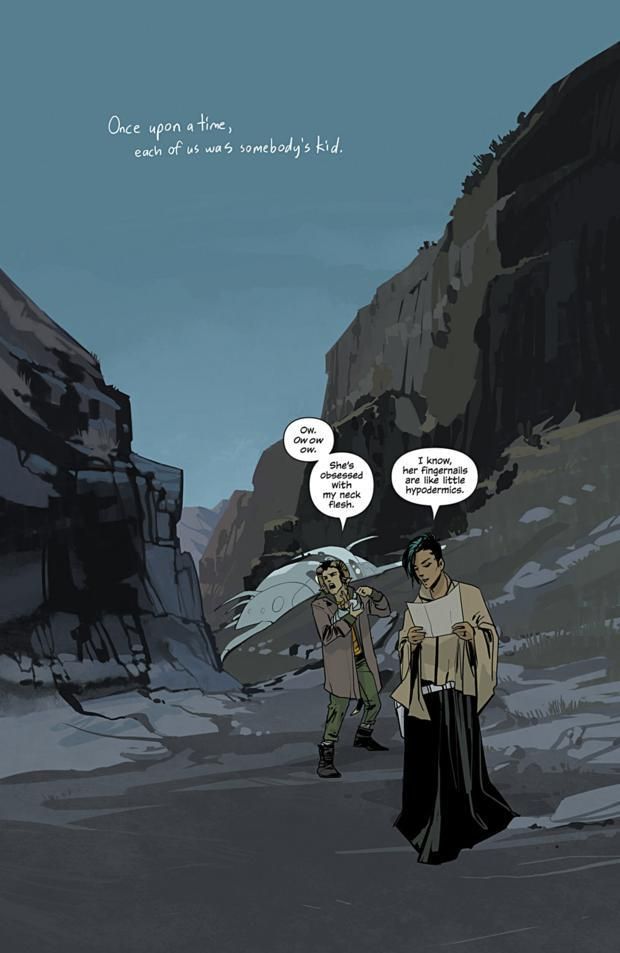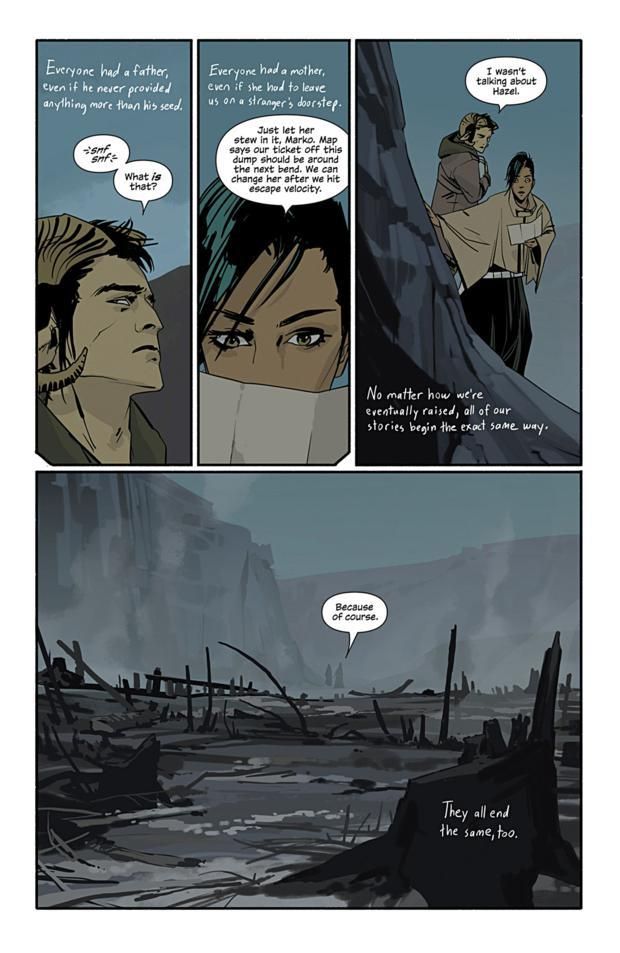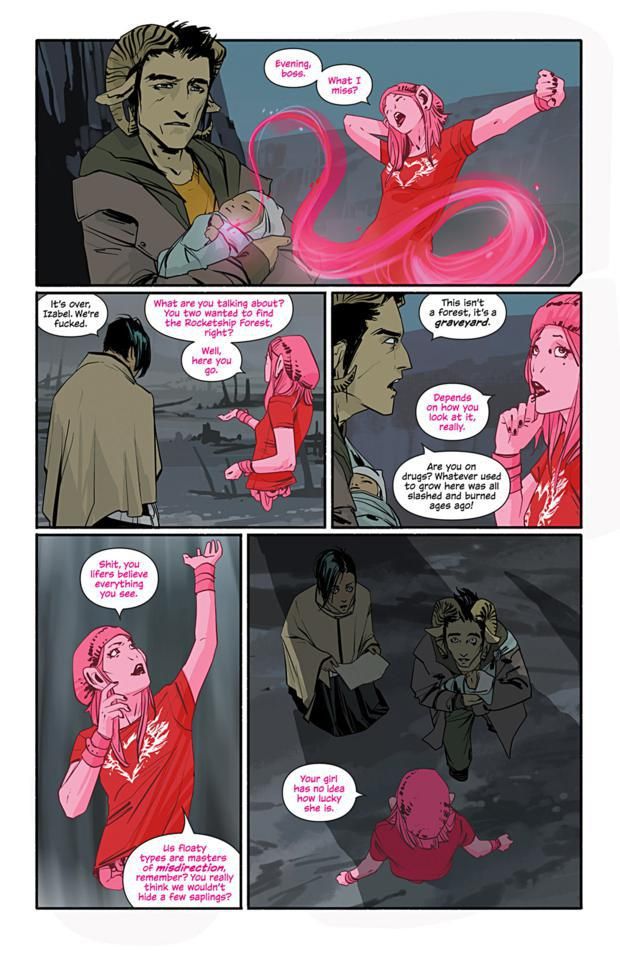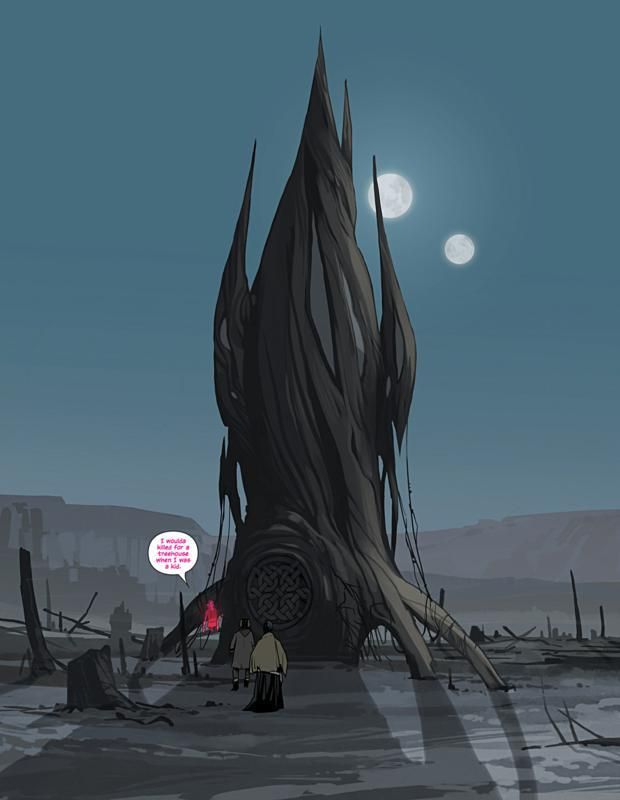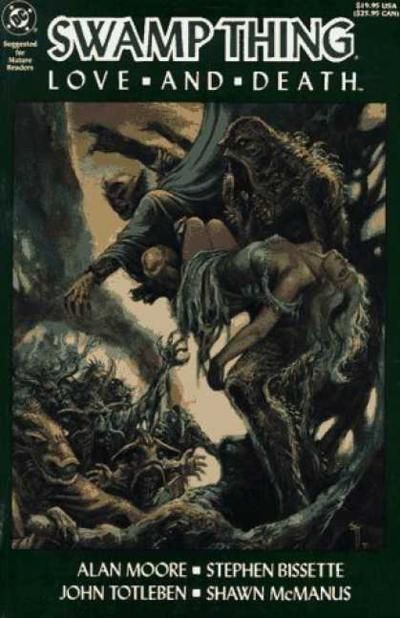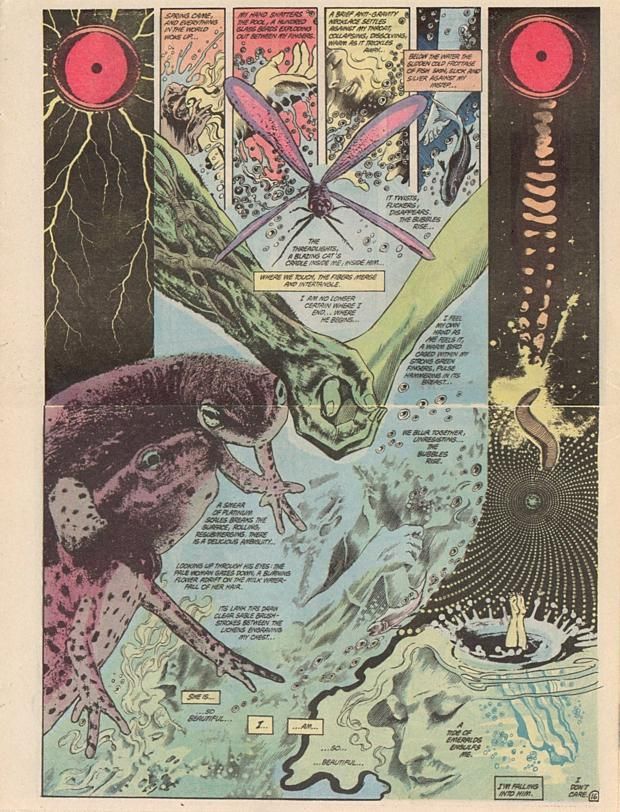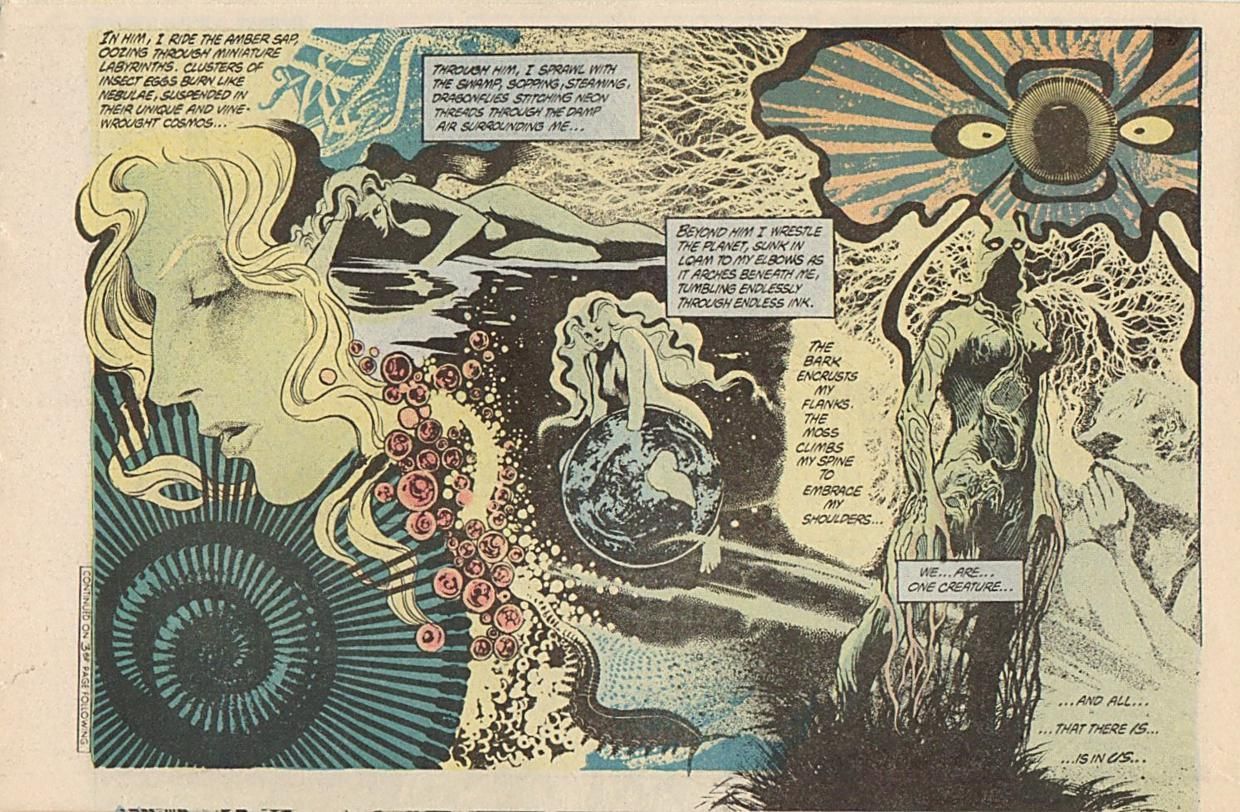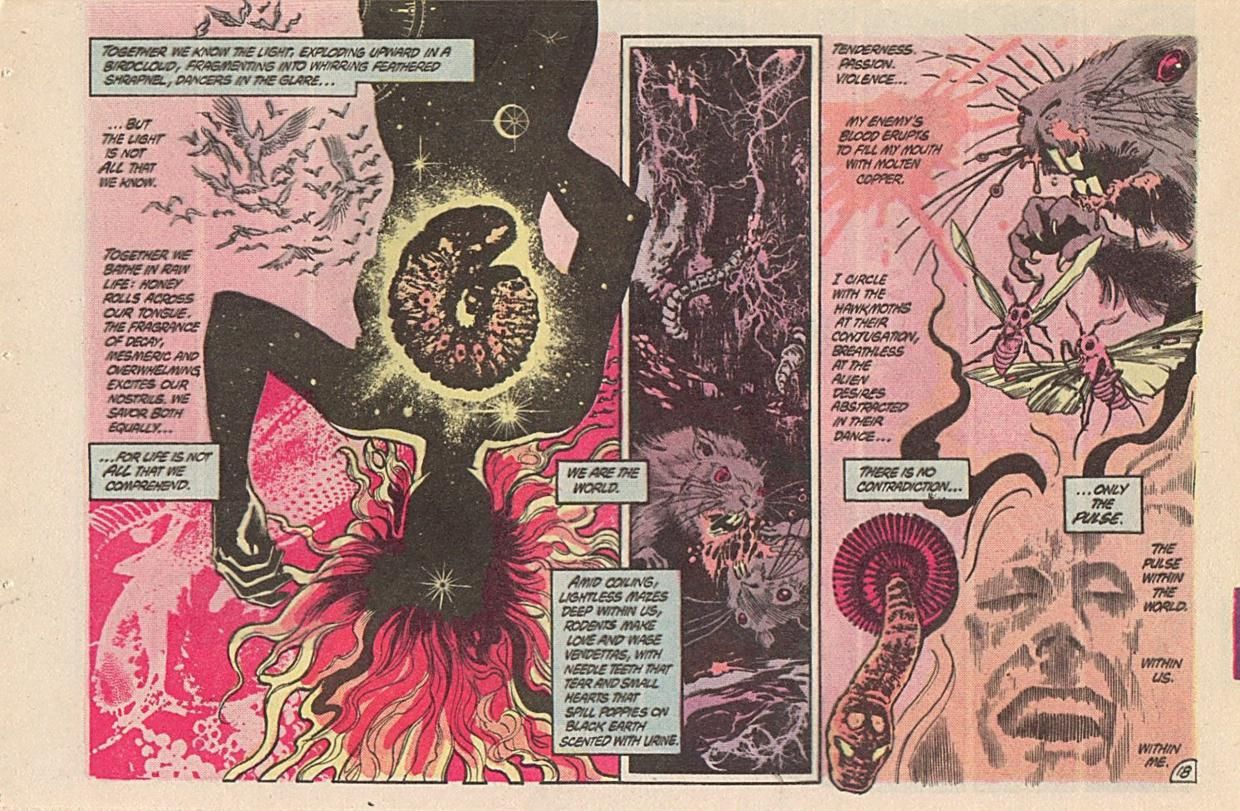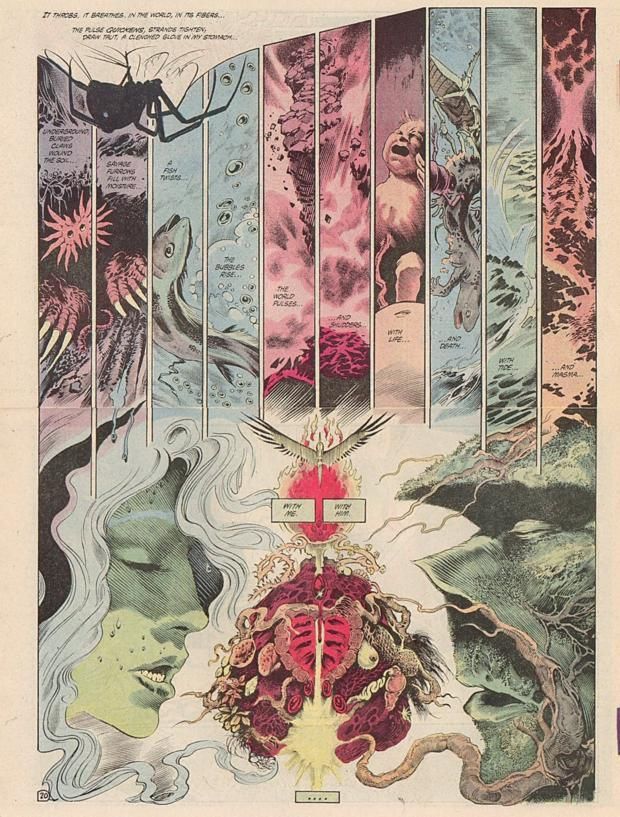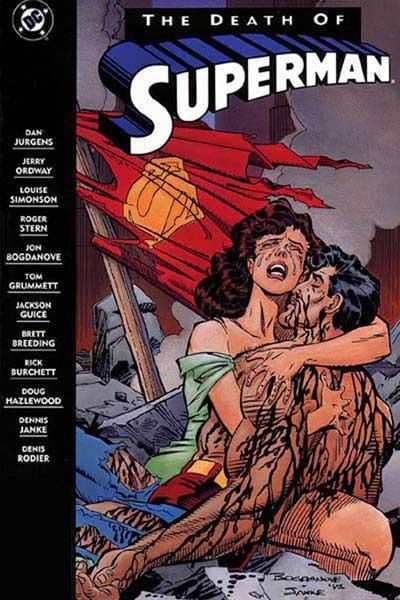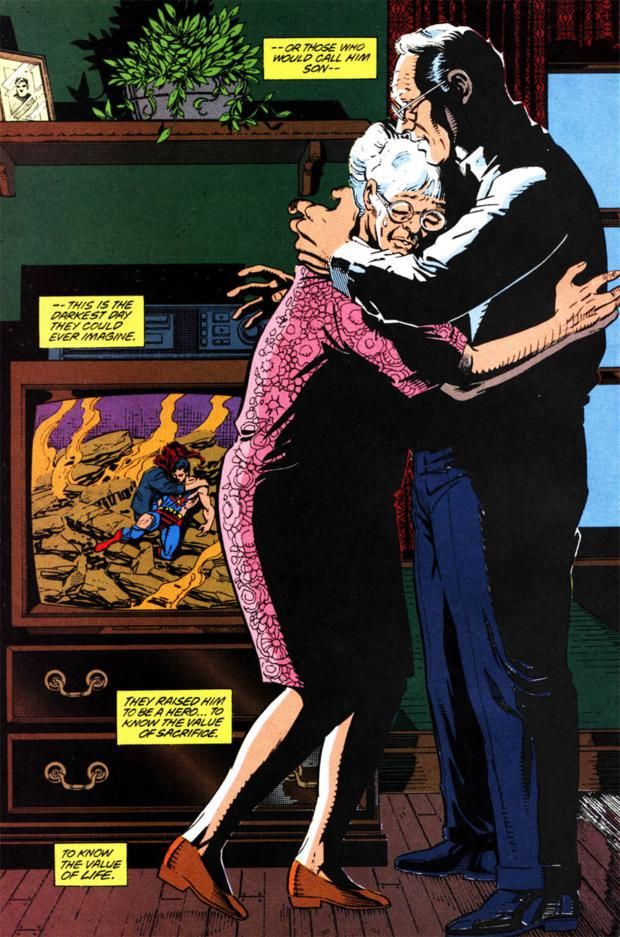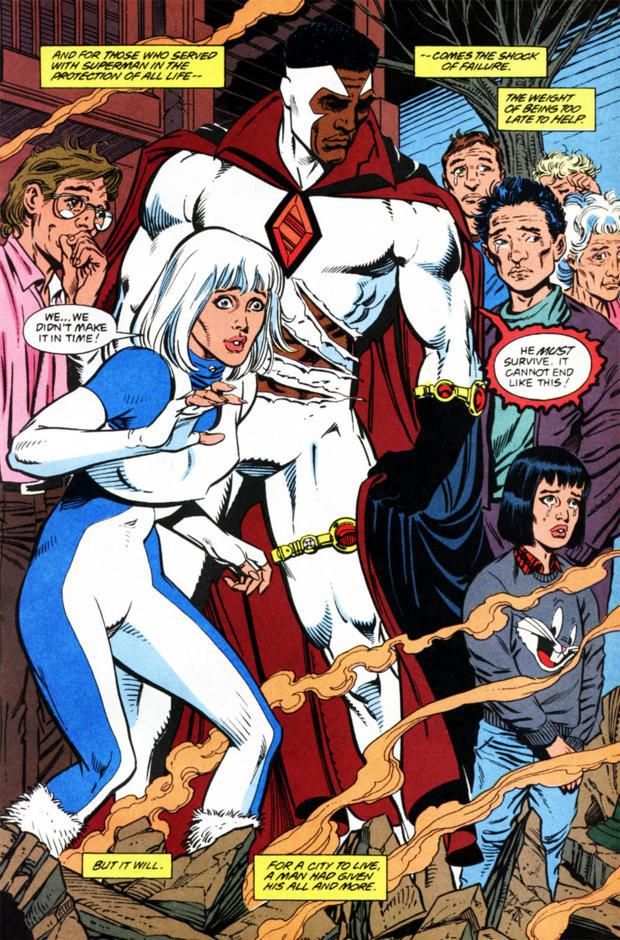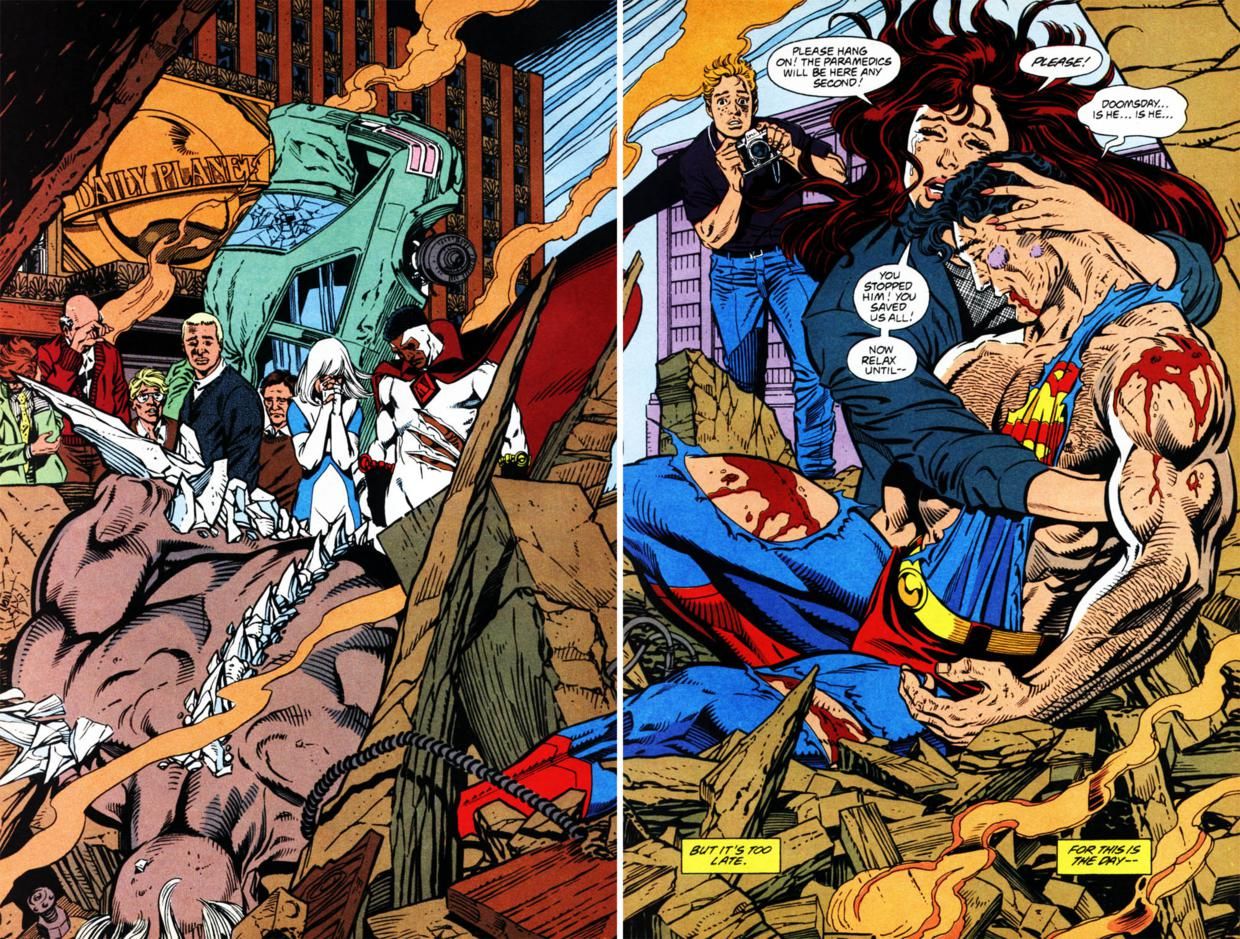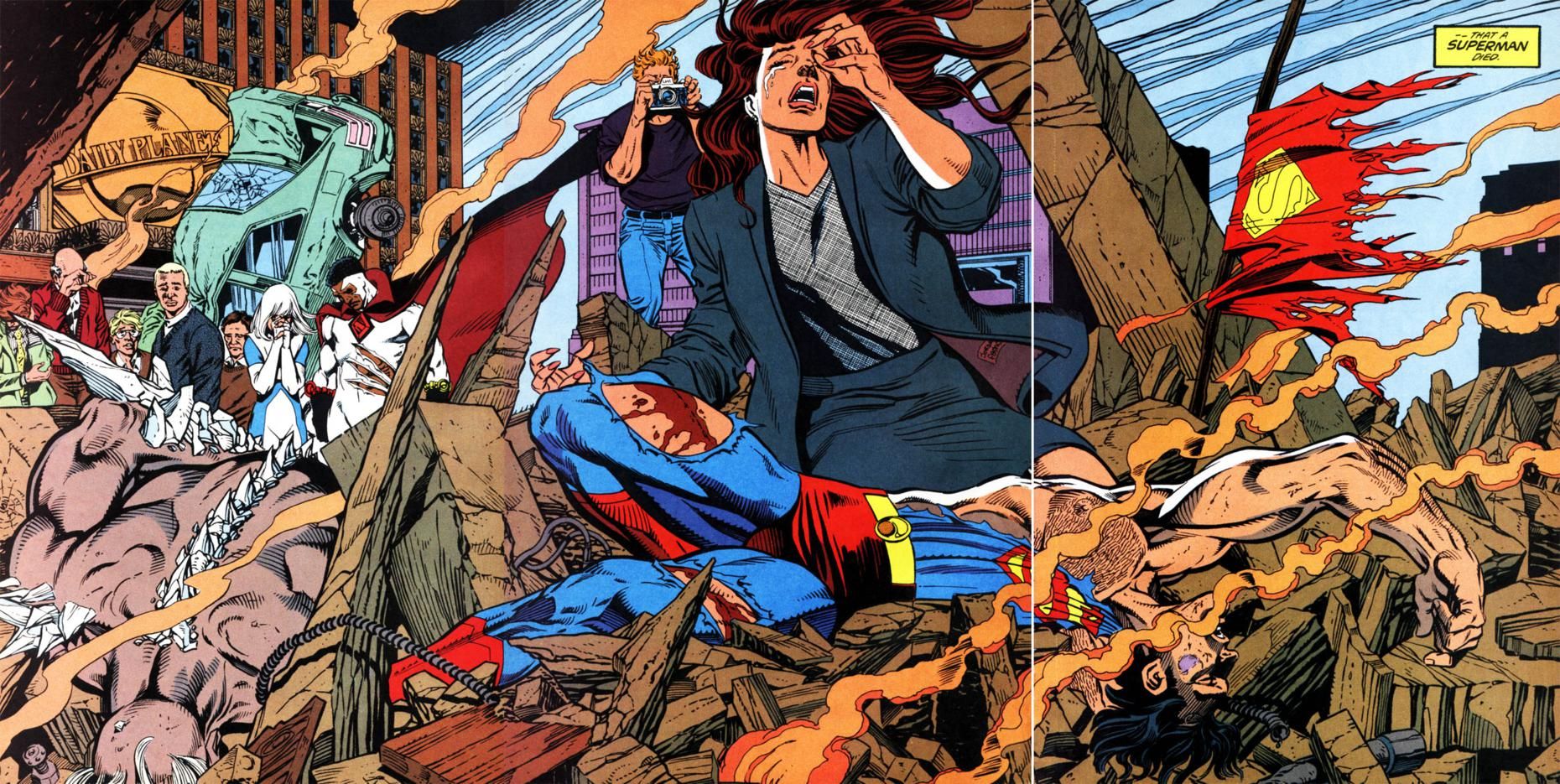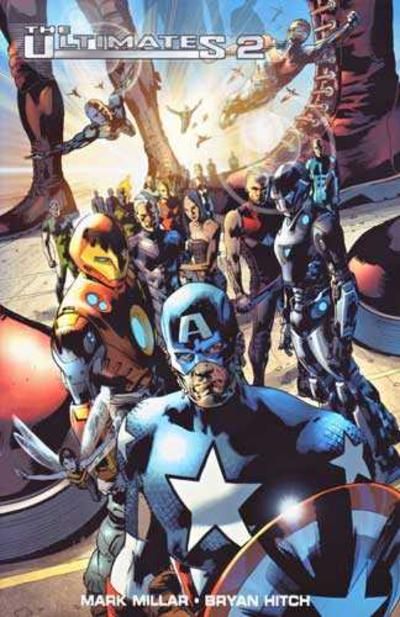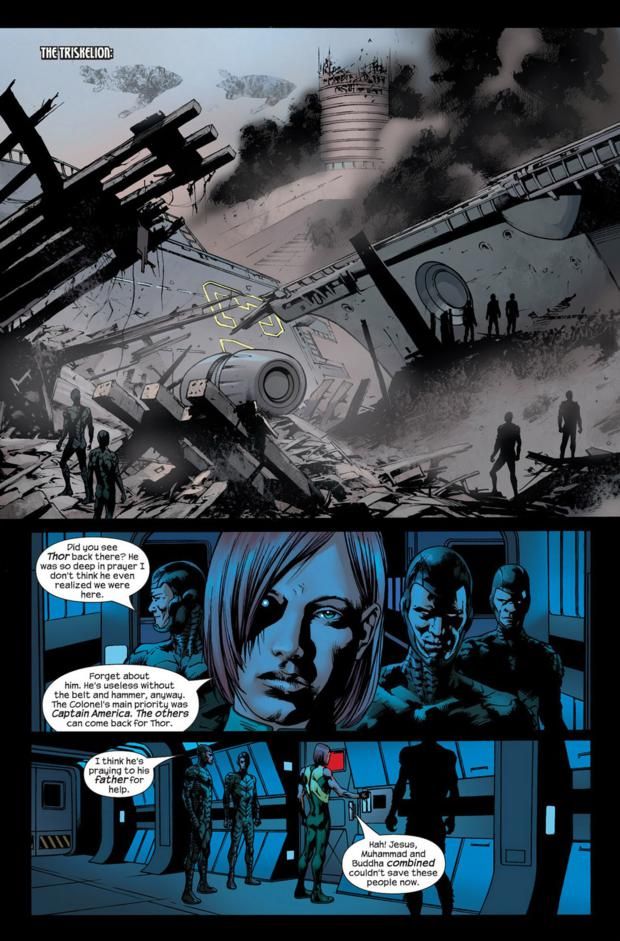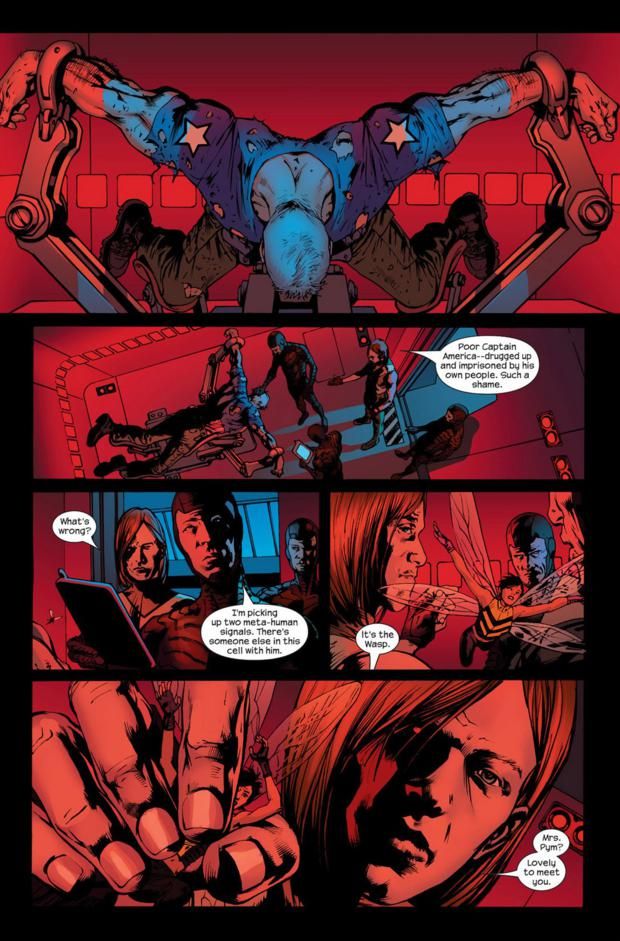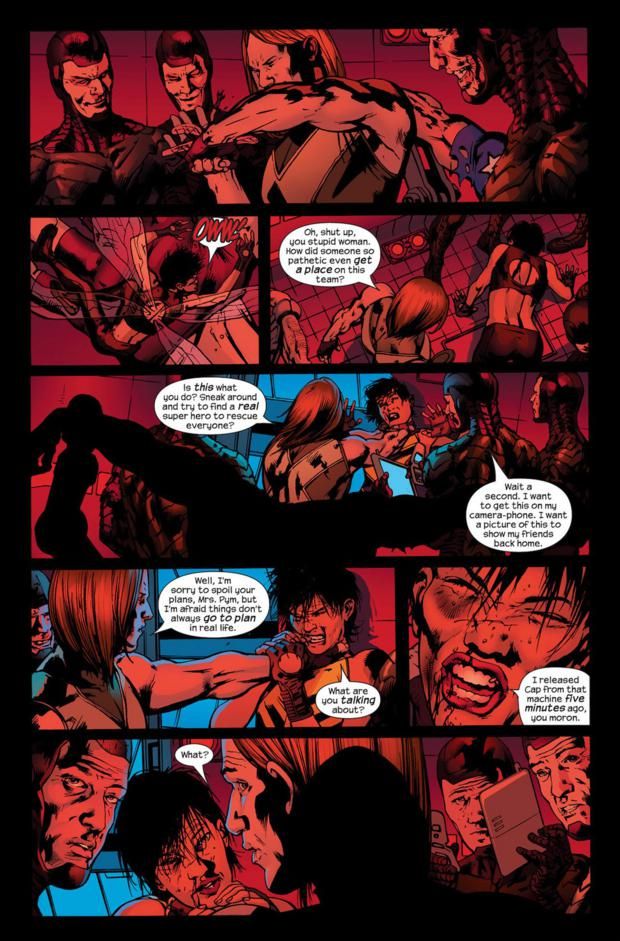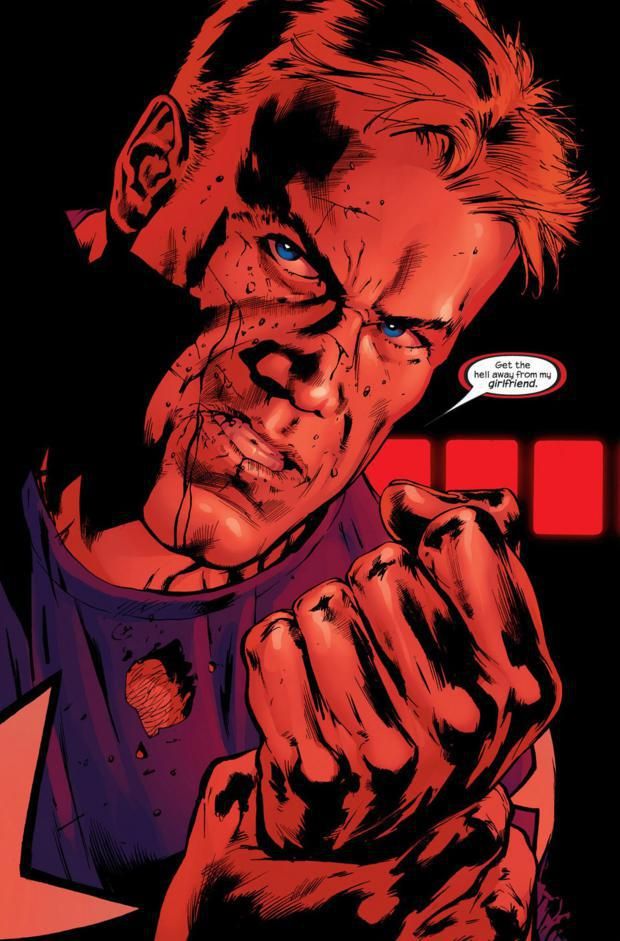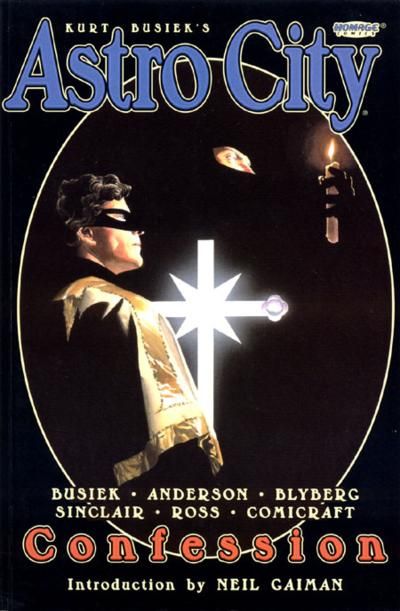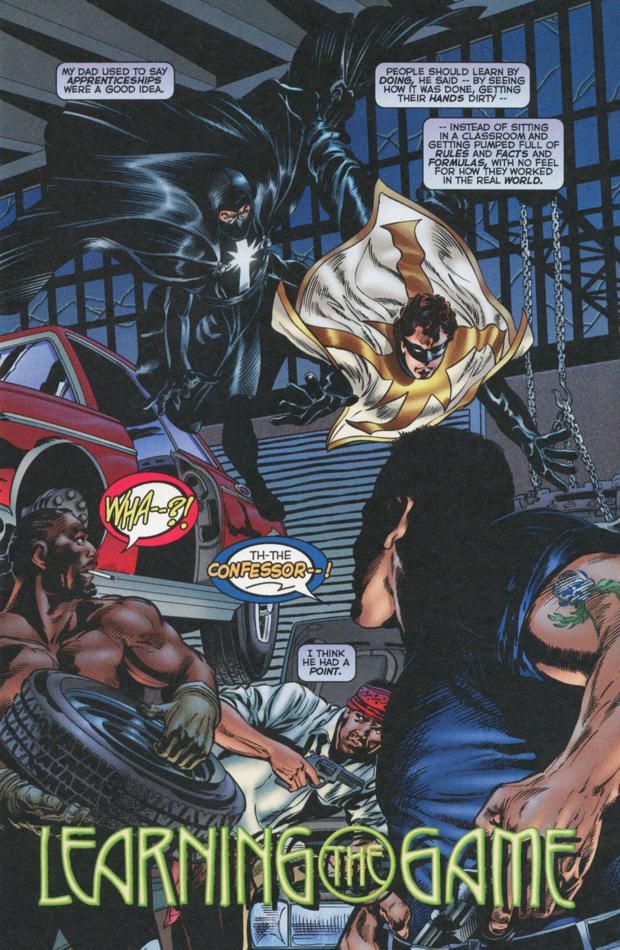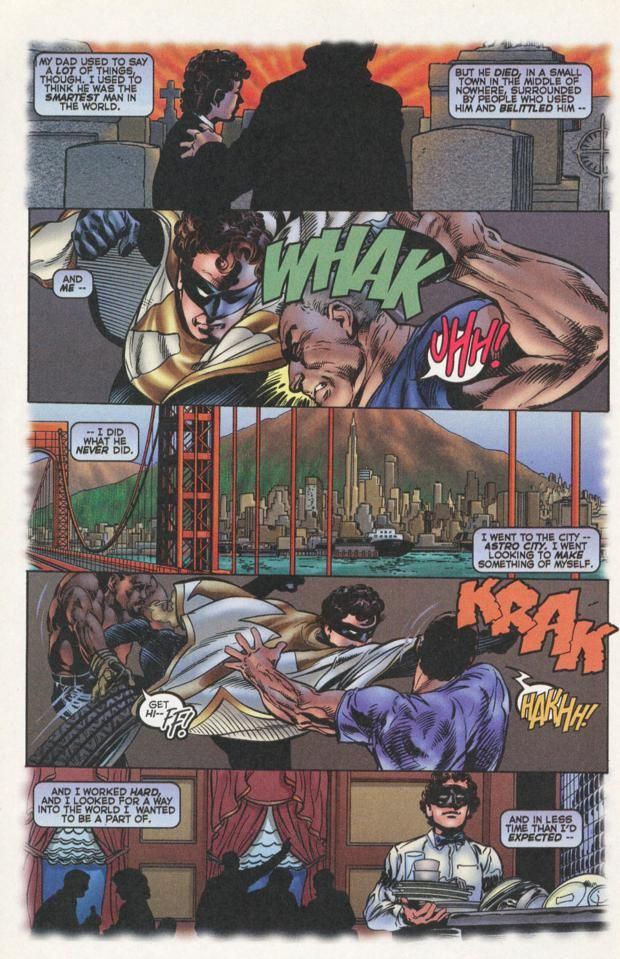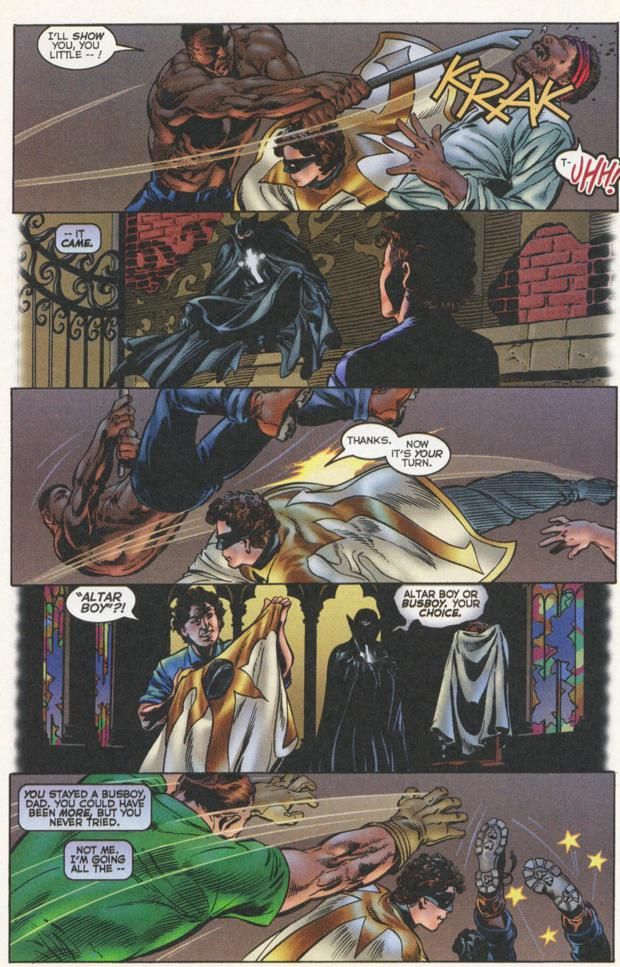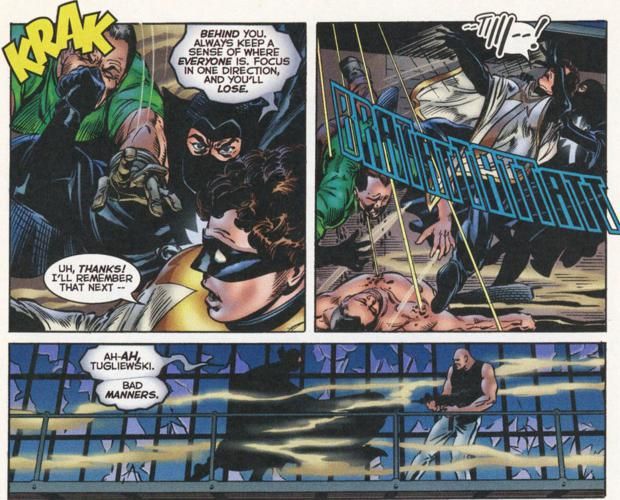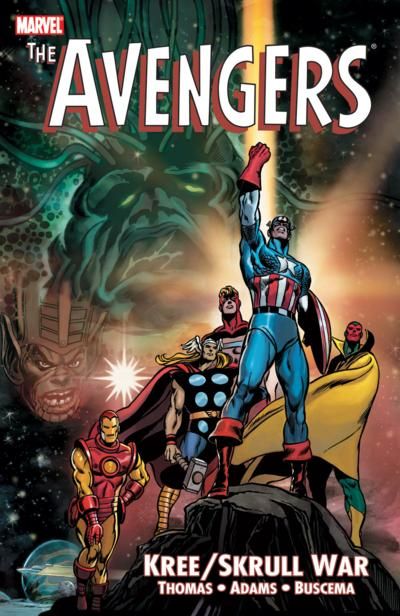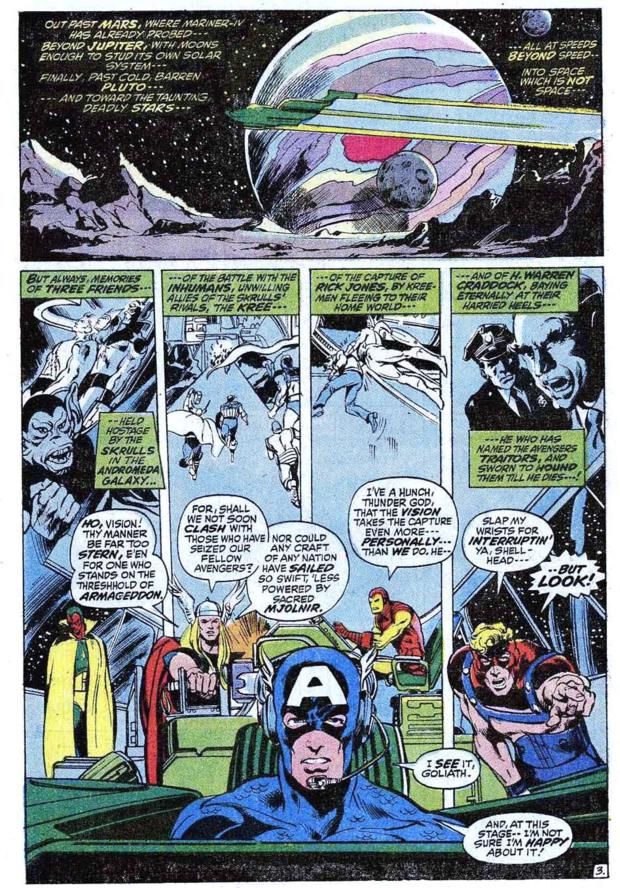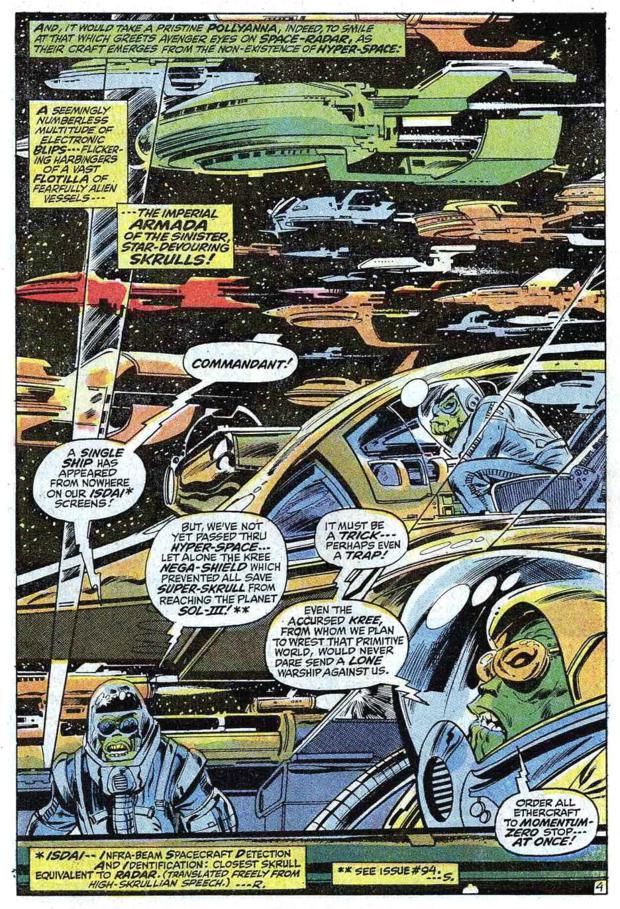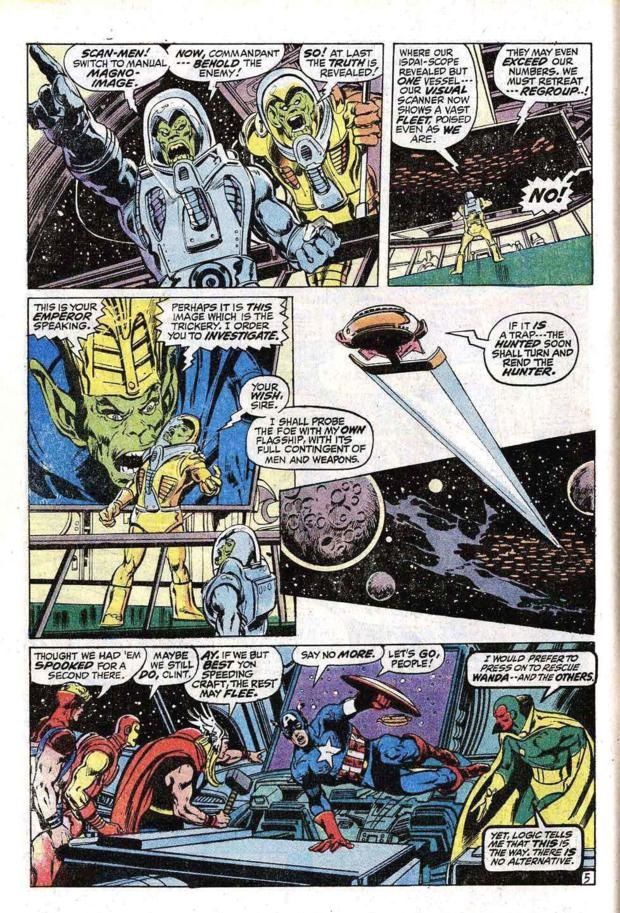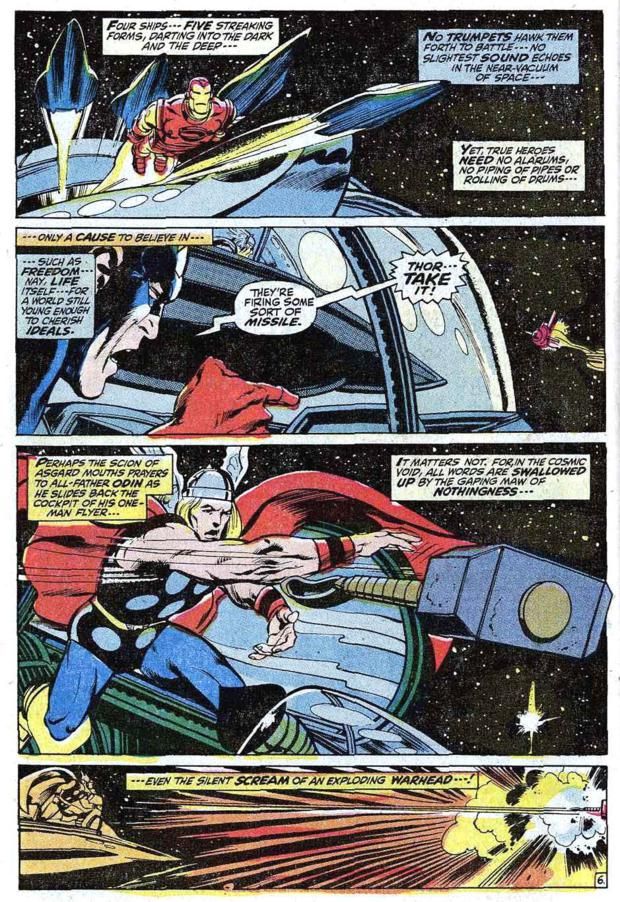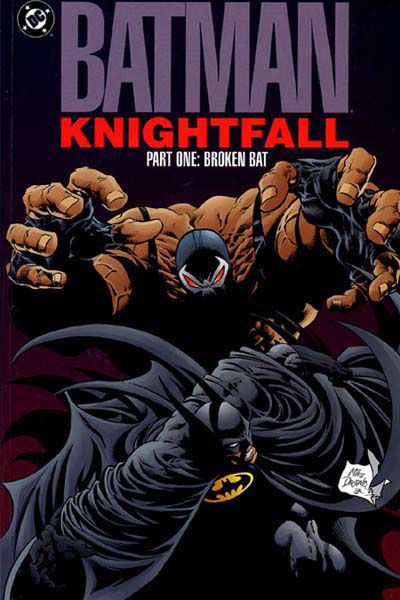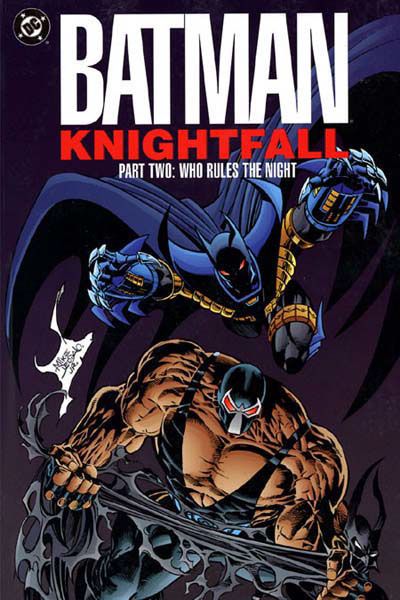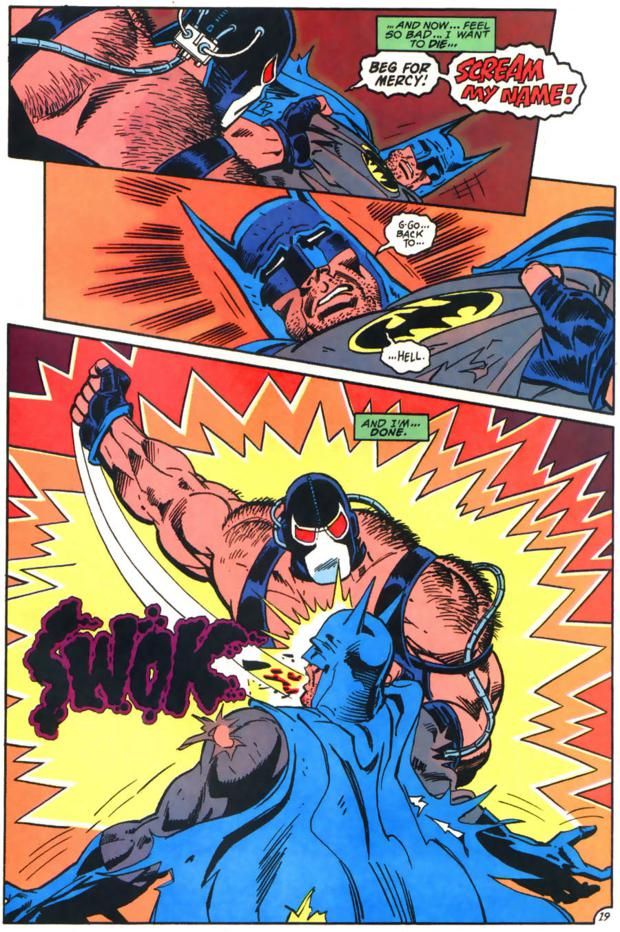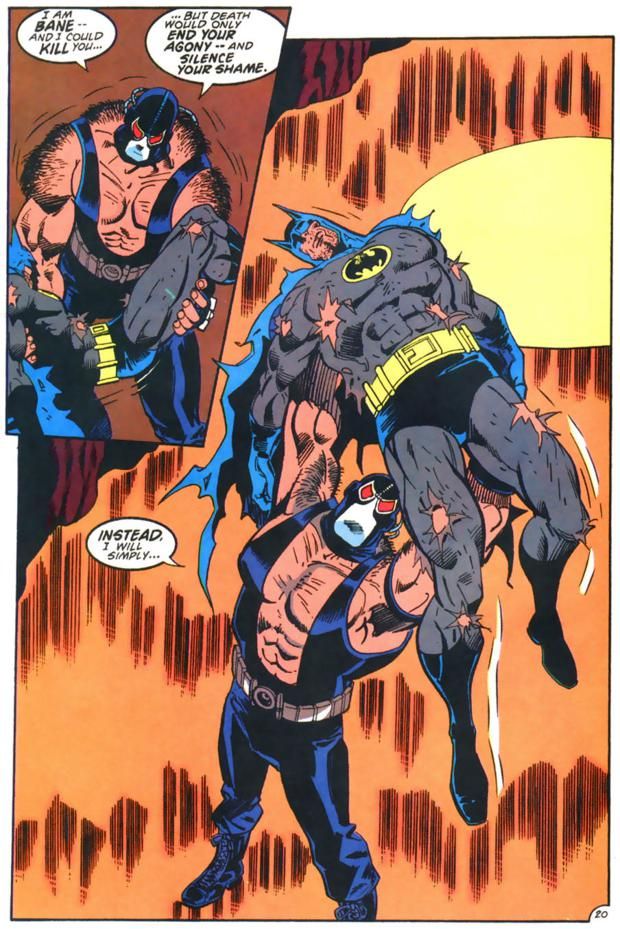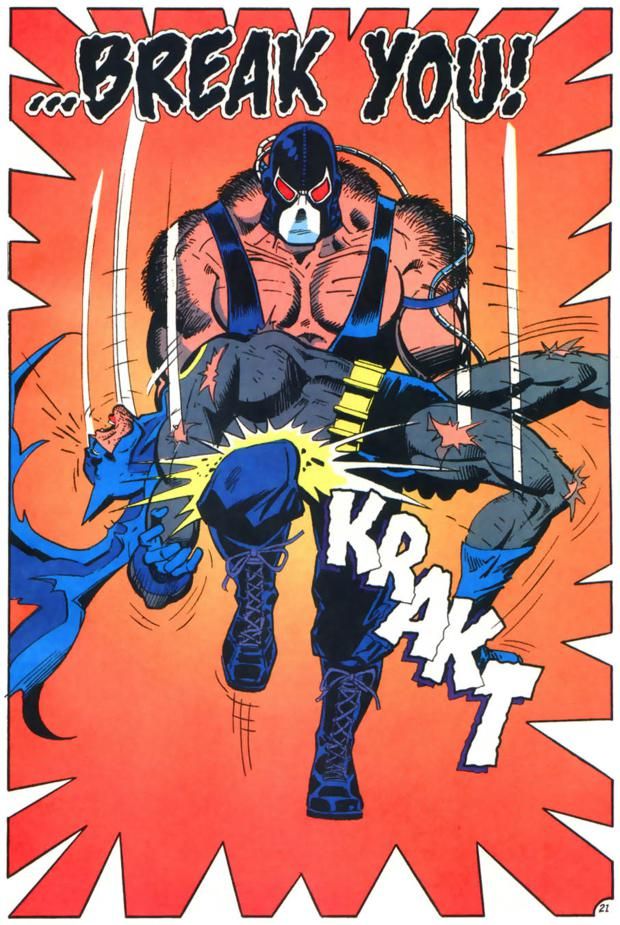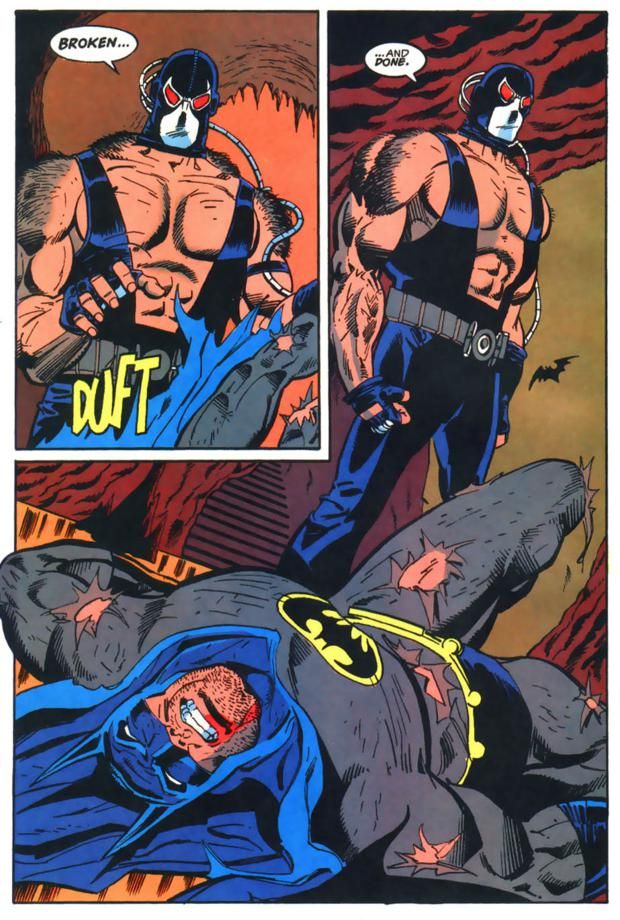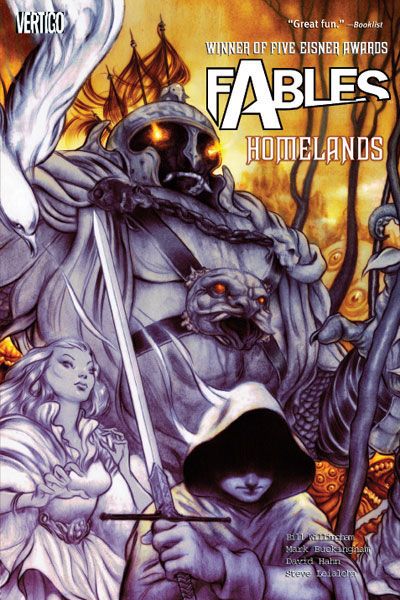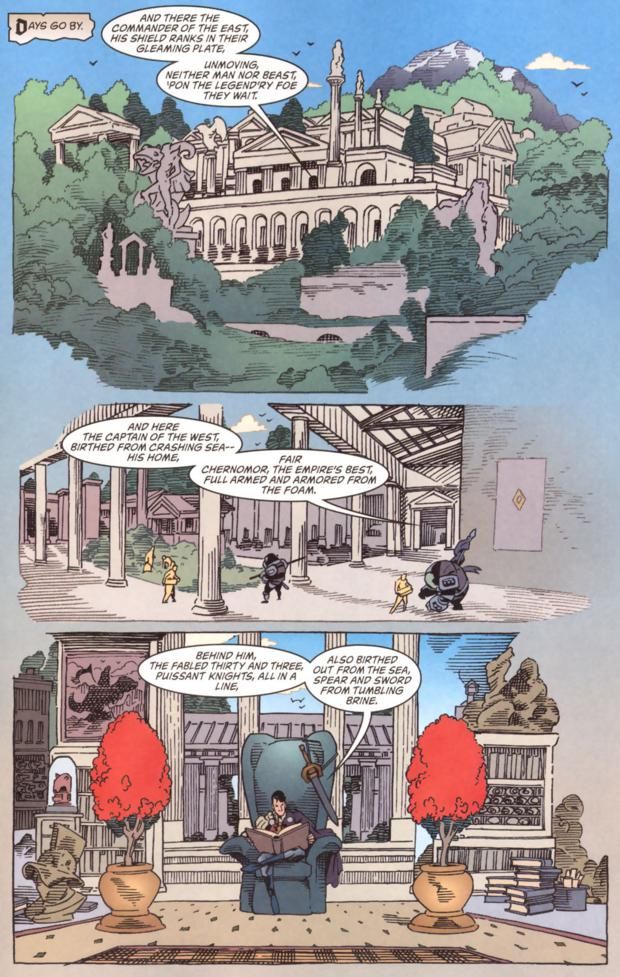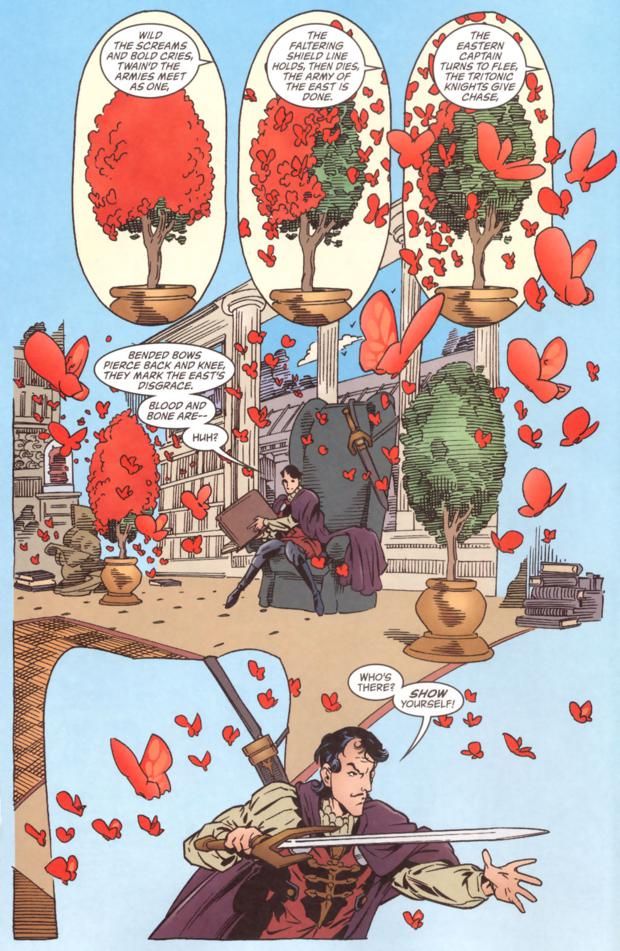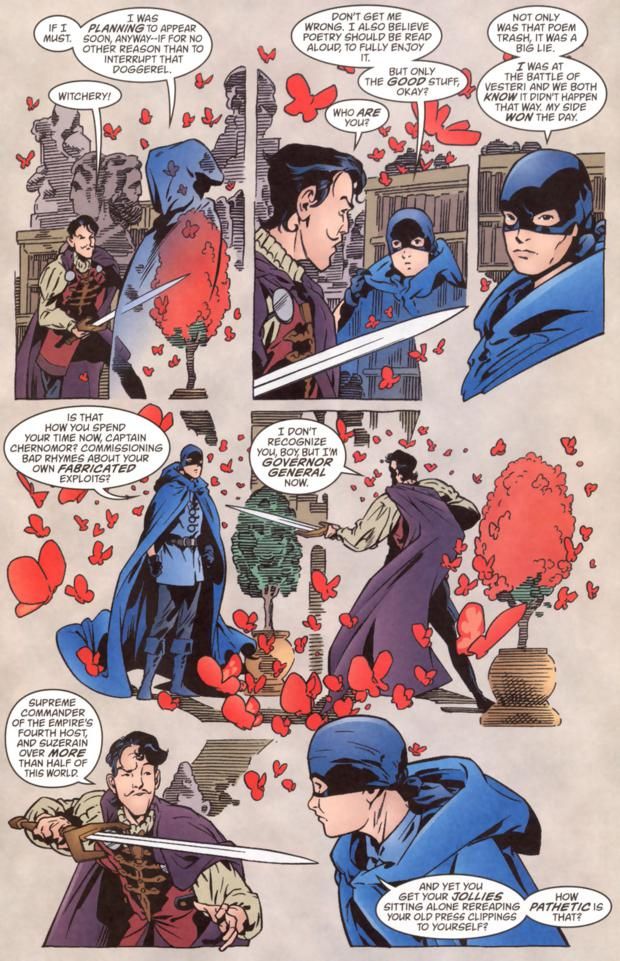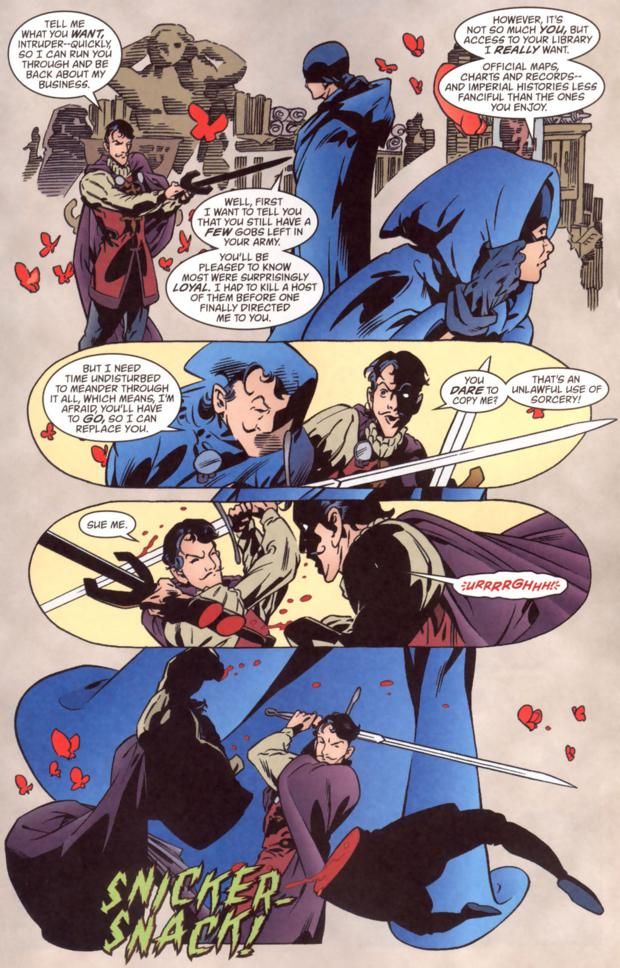Here are the next ten storylines on the countdown, as voted on by you, the readers!! Here is the master list of all storylines featured so far.
Okay, as usual, the votes are more bundled together at the bottom of the list and things open up as we go along. Eventually the results will be five a day, except today (also they'll be in smaller groups as we get to the very end)! Note, there may be some spoilers ahead! You are forewarned!
Enjoy!
NOTE: All of these storyline posts will be image intensive, so I'll be spreading them over multiple pages.
80. "Welcome to Lovecraft" by Joe Hill and Gabriel Rodriguez (Locke and Key #1-6) – 131 points (5 first place votes)
Locke and Key is a series about three siblings (the Lockes) who move to their family estate (Keyhouse) with their mother after their father is murdered. Once there, they begin to discover magic keys that can open up doors in Keyhouse. Different keys have different properties. While this obviously could be a set-up for a fun tale, in the case of Locke and Key it is a horror story, as the keys are involved with some pretty dark magic. Hill manages his large cast extremely well, giving every character (the Lockes plus their friends and family) equal opportunity to shine.
In the first storyline, a mysterious being inside a well has contacted a disturbed young man and convinced him to help find certain keys. Along the way, he murders the father of the Lockes.
Here he is being wooed by the mysterious being from a painting...
Rodriguez shines with his detailed, expressive artwork. One of the most notable aspects of Locke and Key is the sequential storytelling. A great deal of terror is wrung just out of the usage of panels as the slow reveal of something awful is right at the turn of the page or just at the next panel. Rodriguez does a great job milking the horror out of all of his pages. Here's a great example, when the youngest Locke is talking to the mysterious being in the well. He thinks that the echo can't get out. Well, his surprise matches our own...
Hill is also adept at revealing the mystery of the keys slowly but surely. This opening arc really sets up the ongoing mystery beautifully with some dark twists and some excellent character work.
79. “The League of Extraordinary Gentlemen, Volume 1? by Alan Moore and Kevin O’Neill (League of Extraordinary Gentlemen #1-6) - 133 points (2 first place votes)
Alan Moore’s America’s Best Comics line tended towards “high concepts,” you know, really cool ideas that you can get across in a sentence.
“Cops in a city where everyone is a superhero.”
“A living story becomes a superhero.”
“Classic literary characters from the 19th Century form a team of heroes.”
That last one, of course, is what The League of Extraordinary Gentlemen is about. A number of classic British literature characters join together on a team, notably Allan Quatermain (from the novel King Solomon's Mines), Mina Harker (from the novel Dracula), Captain Nemo (from the novel Twenty Thousand Leagues Under the Sea), Griffin (from the novel The Invisible Man) and Dr. Jekyl/Mr. Hyde (from the novella The Strange Case of Dr. Jekyll and Mr. Hyde, Dr. Jekyll and Mr. Hyde).
While that’s a great high concept, there are plenty of great high concepts that can be ruined by bad writing (see, for instance, the movie based on League of Extraordinary Gentlemen), and Moore manages to evade any pratfalls by taking the concept of a book actually set in 1896 very serious, and with a brilliant design artist such as Kevin O’Neill by his side, the look and feel of the book is very much of that time.
The series tells a fairly straightforward villain story (with perhaps a bit of a mysterious villain), but it’s HOW Moore and O’Neill tell is that’s the best part of this tale, as they cleverly incorporate numerous classic literary figures into one cohesive universe – it’s Wold Newton near its best.
Like how Dr. Hyde is tied in with Inspector Dupin of Poe's "The Murders in the Rue Morgue"...
Or how the Invisible Man is introduced by sneaking into a girl's school and sexually assaulting Pollyanna (from the novel Pollyana) before he is captured...
And so on and so forth. For any fan of 19th century and early 20th century literature (particularly English literature), the book is an absolute delight.
78. "Saga, Volume 1" by Brian K. Vaughan and Fiona Staples (Saga #1-6) – 134 points (1 first place vote)
The opening arc of Saga throws us right into the middle of a fascinating story, as two couple from warring planets (well, one is a planet and one is a moon) have a baby. They are sort of like an intergalactic Romeo and Juliet, and many people want to track them down.
The story is narrated by Hazel, the baby in the series, as she tells her story from the future and Vaughan uses this plot device very well, as he allows certain hints to drop here and there about future stories. Also, the way that he breaks off her narration to form powerful cliffhangers is quite impressive. Vaughan has always been a big cliffhanger guy, but I think that Saga is his best use of the cliffhanger that I have seen from him yet. They're much more fluid. They feel like they arise naturally and are not being forced.
I like that we get consistent flashbacks filling us in on Marko and Alana's courtship. It is a strange one, to be sure, so I think it was a smart move to begin the book with them already together and fill us in as we go along.
While this approach is admirable in and of itself, it would mean nothing if Vaughan and Staples did not create compelling characters that we'd like to follow through this unvarnished fantasy world. Luckily, that's just what they do, and not just Alana and Marko. Slowly but surely, Vaughan and Staples populate this world with a variety of fascinating characters. Most notable are the the bounty hunters hunting down the couple and their child and the robot prince who is tasked with their capture, as well, in an official governmental capacity.
Some of the most striking aspects of the series come from the bounty hunter known as The Will, who is accompanied by a Lying Cat, a cat who can tell if you are lying. The Will is not a good man, but he is also driven by a certain code of honor that comes up in a bizarre fashion while on a pleasure planet. The Will has had his heart broken by a fellow bounty hunter and their interaction is fascinating in how it drives him.
Another major addition is the ghost who acts as Hazel's nanny, of sorts.
I've long been an admirer of Staples' prodigious talents and she is absolutely destroying this series. Her designs are excellent, her character work is sublime and she is an amazing storyteller. Vaughan sure is lucky to be working with her.
Here we see Alana, Marko and their nanny try to head for a rocketship forest to find a way to get away from the people tracking them down...
Very cool stuff.
Go to the next page for #77-74...
77. “Love and Death” by Alan Moore, Stephen Bissette, John Totleben, Shawn McManus and Rick Veitch (Saga of the Swamp Thing 28-34 & Annual #2) – 137 points (3 first place votes)
Love and Death is the storyline responsible for Swamp Thing officially moving from a regular Comics Code Approved comic to a “Mature Readers” comic, only in the case of Swamp Thing, it was termed “Sophisticated Suspense” to deter youngsters from reading it.
Alan Moore had already made quite a name for himself on just the first eight issues of his run, but this storyline, which involved Abby Cable’s evil uncle Anton Arcane taking over the body of her husband before killing her (and officially ending her husband’s life) – well, it took the book in a whole different direction of darkness.
After Swamp Thing defeated Anton (killing him once again), he decides to go to Hell to rescue Abby’s soul.
Nowadays, with the proliferation of pretty much every DC Universe character, it is hard to imagine how fresh someone like Moore using Deadman, The Demon and the Phantom Stranger was, but it was – and that’s on top of the fact that he used them all extremely well. Moore’s use of the Demon (who he had used a couple of issues earlier) was extremely influential on later writers of the character, and Deadman, heck, he had not even been USED in YEARS before Moore featured him here.
The storyline concludes with Abby’s return and the famous “sex issue,” where Abby and Swamp Thing make love by Abby eating a tuber created from Swamp Thing's body and then sort of hallucinates their sexual encounter...
Stephen Bissette and John Totleben are almost shocking at the level of excellence they reach on this storyline – from the darkness of the early story (Bissette’s zombies are gruesome) to the tender euphoria of their love-making (like a kaleidoscope has exploded), they master it all.
76. “The Death of Superman” by Dan Jurgens, Jerry Ordway, Louise Simonson and Roger Stern (writers), Dan Jurgens, Tom Grummett, Jon Bogdanove and Jackson Guice (pencilers) and Brett Breeding, Doug Hazlewood, Dennis Janke, Denis Rodier and Rich Burchett (inkers) (Superman #74-75, Adventures of Superman #497, Superman: Man of Steel #18-19, Action Comics #684, Justice League America #69) – 139 points (2 first place votes)
In an idea borrowed from writer Louise Simonson's husband, Walter and the issues leading up to the introduction of Surtur in Thor, we kept seeing the sound effect "Doom doom doom" appear at the back of the four Superman titles in the weeks leading up to the reveal in Man of Steel #18 of a monstrous creature pounding away at its captivity and the "doom" noise was it punching its way free.
It then went on a rampage throughout the United States, headed towards Metropolis through sheer happenstance.
The Justice League showed up to stop it, and the creature went through them easily (it was Leaguer Booster Gold who named the creature "Doomsday").
Eventually, it came down to Superman, who tried to keep the creature from Metropolis, but eventually ended up battling the creature all the way TO Metropolis.
Eventually, in one last blow for each combatant - the two killed each other.
This was certainly one of the more dramatic comic books of all-time. I mean, Superman DIED, for crying out loud!
75. “Ultimates 2? by Mark Millar, Bryan Hitch and Paul Neary (Ultimates 2 #1-13) – 140 points (2 first place votes)
In this story, we see the downfall of the Ultimates as they become SO effective as a tool of the United States government that other nations begin to formulate a counter to them, and when their plan springs into action, the Ultimates cannot even trust each other as the whole operation collapses around them and as the United States of America is stolen right out from underneath their noses! And is Loki involved or is he not? And which member of the Ultimates is a traitor? All these questions answered and more in this 13-part saga that culminated with a stunning series of dramatic battles in the final few issues!
Here is one of the great sequences where the Ultimates begin to rebel against the occupation of America...
74. “Confession” by Kurt Busiek, Brent Anderson and Will Blyberg (Kurt Busiek’s Astro City #4-9) – 141 points (1 first place vote)
Confession was a major departure for Kurt Busiek’s Astro City. Up until this point, the book was mostly high quality stories on the lighter side of superheroes – not “the lighter side” like humorous, but in the sense that they were more traditional superheroes – the Supermans and the Fantastic Fours of the world. The bright kind of heroes.
In Confession, Busiek and artist Brent Anderson turn their eye to the dark side of Astro City- the dark alleys and the people who inhabit the night.
It is here that we meet Brian Kinney, a young man who longs to be a superhero. Before too long, he is the sidekick to the Batman analogue, The Confessor, and Kinney is Altar Boy.
Throughout the rest of the arc, we see Brian grow as a hero but also see that there is something seriously messed up with The Confessor’s origin story – what it is is the major twist of the story.
That doesn’t mean that there isn’t a lot else going on, as there is, with a superhero registration act debate and heroes seemingly acting as villains, this is a packed storyline, but one that, like all of Busiek’s Astro City stories, is based on the complex personalities of the characters involved.
Go to the next page for #73-71...
73. “Kree/Skrull War” by Roy Thomas, Neal Adams, Sal Buscema and John Buscema (Avengers #89-97) – 144 points (2 first place votes)
The most striking aspect of the Kree/Skrull War is just how many different ideas that writer Roy Thomas manages to fit into this one story. So many different things take place that there is never any time to relax, for as soon as you think Thomas is going one direction – he goes another.
The main gist of the story is that the people of Earth, primarily the Avengers, get caught up in a long-time feud between the Kree and the Skrulls.
This shows up on Earth with the shape-changing Skrulls causing trouble on Earth that is a commentary on McCarthyism (shape-changing does wonders for the whole “anyone could be a commie spy!” attitude of McCarthyism). A Senator (actually a Skrull in disguise) causes an “anti-alien” rally in the public, which is bad news for the superhero Captain Marvel, who happens to be a Kree himself! The whole “Communists among us” angle is even played up on a memorable cover during the storyline – “The only good alien is a dead alien!” – taken directly from anti-communism rhetoric.
This storyline is also a major one in the development of the Vision, particularly his relationship with the Scarlet Witch. Speaking of those “out of nowhere” ideas – early in the story, Thomas and artist Neal Adams do a stellar take-off on the Fantastic Voyage by having Ant-Man shrink down and revive a comatose Vision.
Later on, Vision gets to opine about the foolishness of McCarthyism, and it is at this time that he begins to draw closer to his teammate, the Scarlet Witch, who is both a gypsy AND a mutant, so she knows about prejudice!
Thomas has the story leap from location to location, and eventually throws in a number of far-flung space adventures – it’s really a thrill-a-minute.
The artwork by the Buscema brothers and Neal Adams is about as good as you could have possibly hoped for in an early 1970s Marvel comic! Especially Adams’ thrilling issues.
Really, the ideas that Thomas came up with for the Kree/Skrull War would be re-visited time and time again over the next few decades, all the way through to today, making it a truly landmark storyline!
72. “Knightfall” by Doug Moench, Chuck Dixon, Jim Aparo, Norm Breyfogle, Graham Nolan, Jim Balent and a number of inkers (Batman #491-500, Detective Comics #659-666) - 146 points
The basic gist of Knightfall is that this fellow named Bane shows up in Gotham City with basically one goal – “break” Batman.
To achieve this, Bane frees all the inmates of Arkham Asylum to force Batman to capture them all before they can do too much damage.
This results in a frantic series of stories as Batman hunts down all the escapees, allowing writers Moench and Dixon to feature the whole gamut of cool Batman villains.
Meanwhile, the man formerly known as Azrael, Jean-Paul Valley, has been training with Robin to be a hero.
When Batman finally captures all the villains, he is naturally exhausted. Unknown to him, though, this is the time that Bane chooses to strike, and he ultimately deals Batman a tragic blow.
This leads to Jean-Paul Valley taking up the mantle of Batman, giving Bane quite a surprise!
This story was a bit of a social experiment on the part of Batman editor Denny O’Neill. He wanted to show just why Batman was so special, and to do so, he would have a “Batman for the 90s” show up, all the better to contrast with the original (and, of course, hopefully this new character could be spun off into his own book when Batman returned, which is just what happened).
71. “Homelands” by Bill Willingham, Mark Buckingham and Steve Leialoha (Fables #36-38, 40–41) – 147 points (1 first place vote)
One of the most notable aspects of Fables is just how well Bill Willingham uses the ensemble nature of the book.
Characters can stay in the background for years before suddenly becoming the star of the book.
That was the case with Boy Blue, the longtime background character who worked as a clerk in the Fabletown offices. Boy Blue seemed like a nice guy, but pretty unassuming. Soon before Homelands began, though, we learned that back in the days when the Fables were trying to escape from their Homelands (and the evil forces of the Adversary), Blue was quite a little warrior. He also had a relationship with Red Riding Hood.
Well, when Red Riding Hood showed up back at the March of the Wooden Soldiers and turned out to be a phony, Blue felt that he owed it to the real Red Riding Hood to save her.
So Blue surreptitiously stole a number of valuable and potent weapons, including the Witching Cloak (which allows him to teleport) and the Volpal Blade (from the poem Jabberwocky – it goes ” snicker-snack” as it cuts through pretty much anything). He also takes the wooden corpse of his friend, Pinocchio.
The rest of the arc, Blue cuts a swath through the Homelands in pursuit of the Adversary himself.
In the end, Blue is shocked to learn the TRUE identity of the Adversary!
It’s a thrilling action-packed adventure with striking art from Mark Buckingham, who has helped Willingham so much in making Fables such a consistently entertaining comic from month to month.
This was a game-changing arc, especially with the identity of the Adversary finally being revealed after almost four years of comics!

